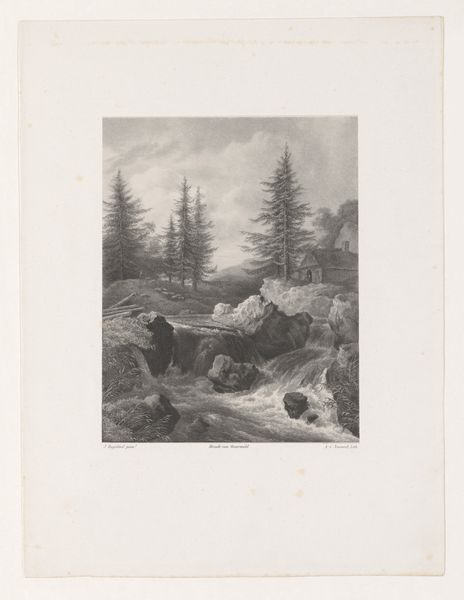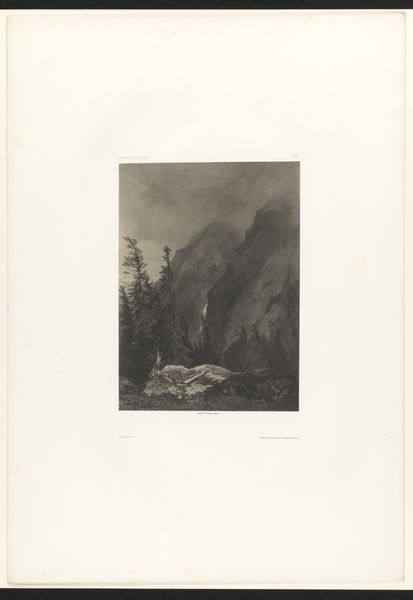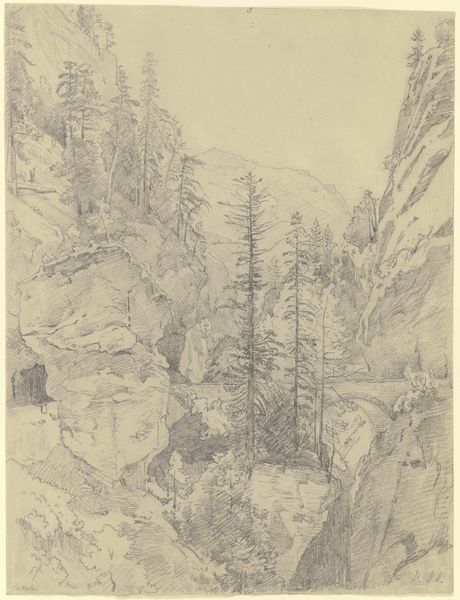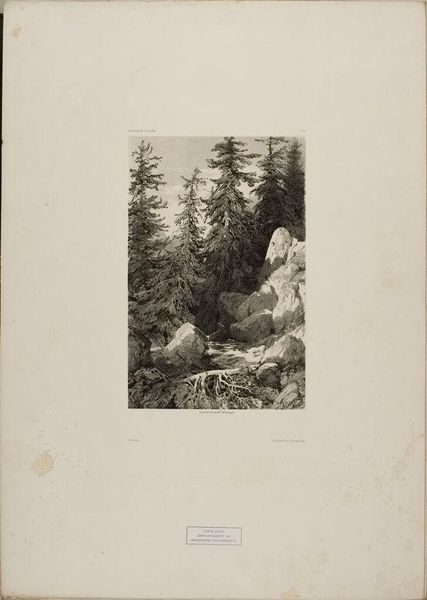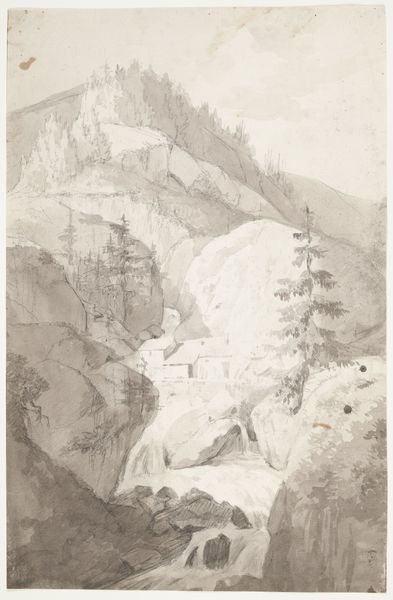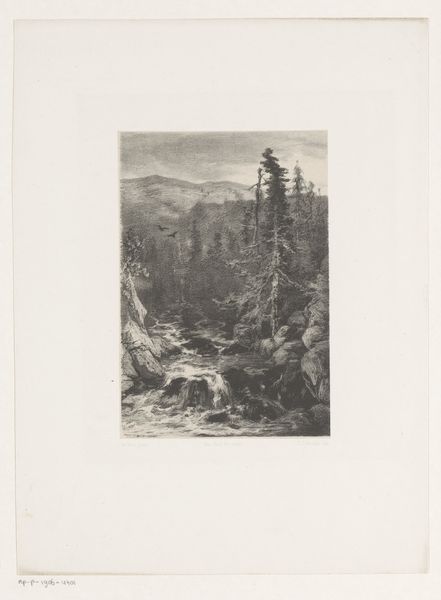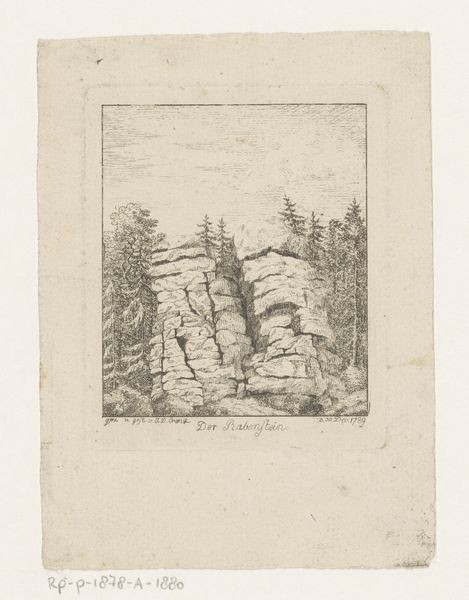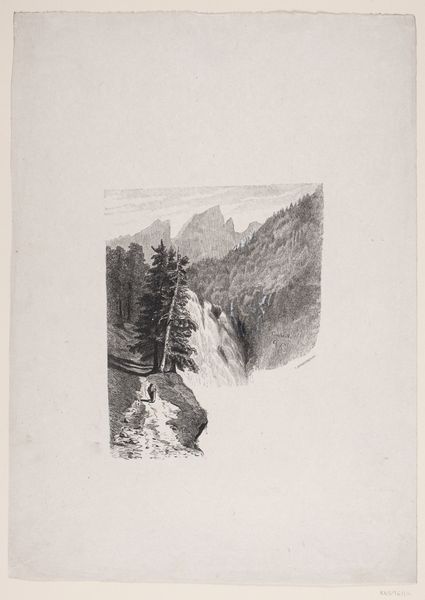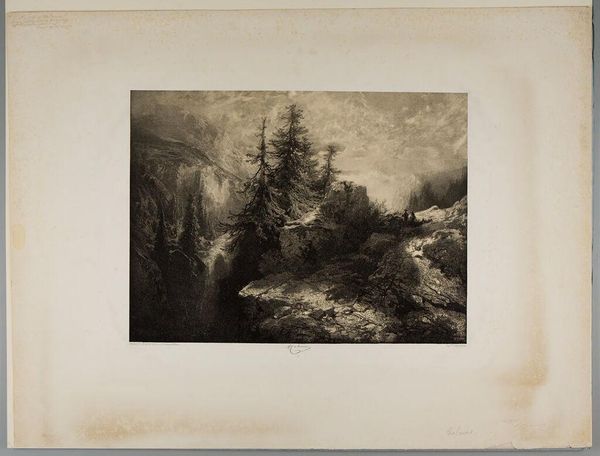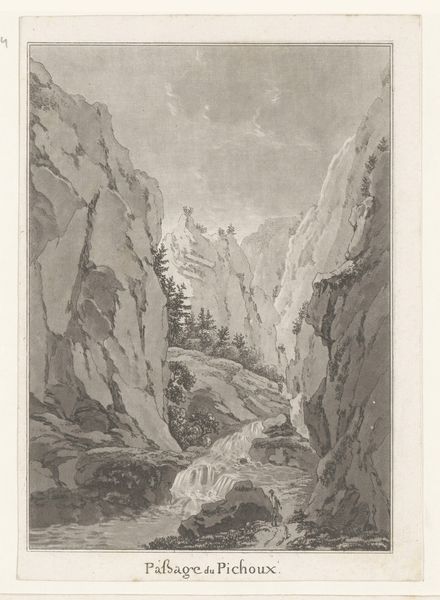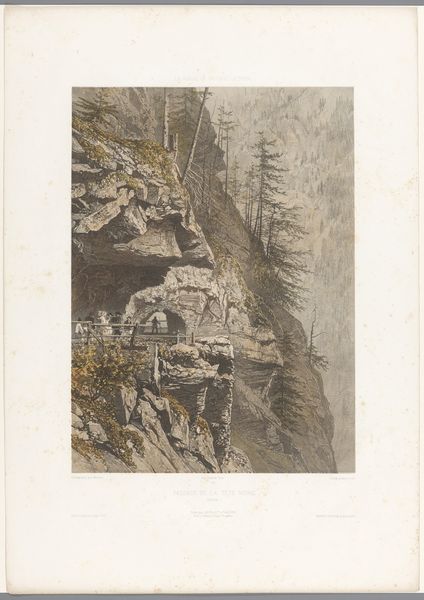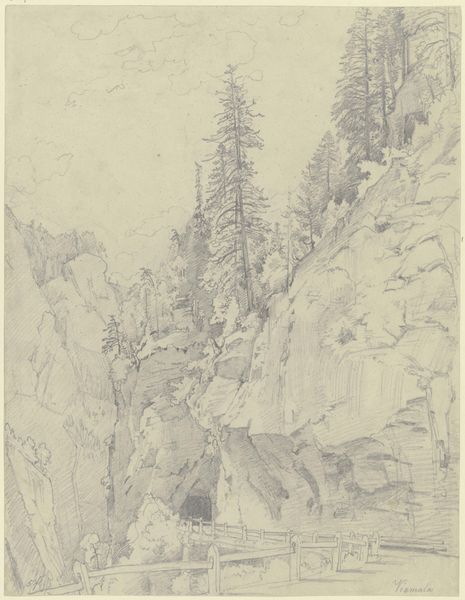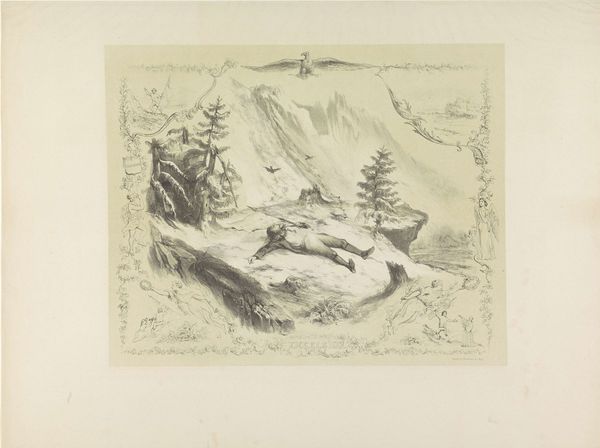
Dimensions: height 520 mm, width 352 mm
Copyright: Rijks Museum: Open Domain
Carel Alphons Eckstein made this landscape drawing with pen and ink around the late 19th century. The artist used delicate strokes to create a sense of depth, capturing the rough textures of the rocks and the movement of the water. Ink has a unique fluidity, allowing for fine lines and subtle shading, crucial in depicting the intricate details of the natural scene. The application of ink, a fairly accessible material, allowed Eckstein to produce detailed work without the cost associated with painting. The drawing evokes the tradition of landscape art, which often served as a reflection on nature and the picturesque. It speaks to the growing interest in landscape as a retreat from the industrialized world, and a celebration of the untouched wilderness. By considering the materials and techniques used, we gain a deeper understanding of the social and cultural values embedded in the work, and the historical context in which it was made.
Comments
No comments
Be the first to comment and join the conversation on the ultimate creative platform.

